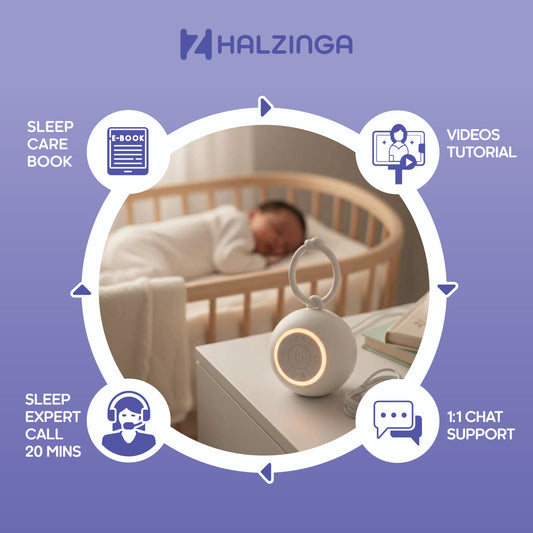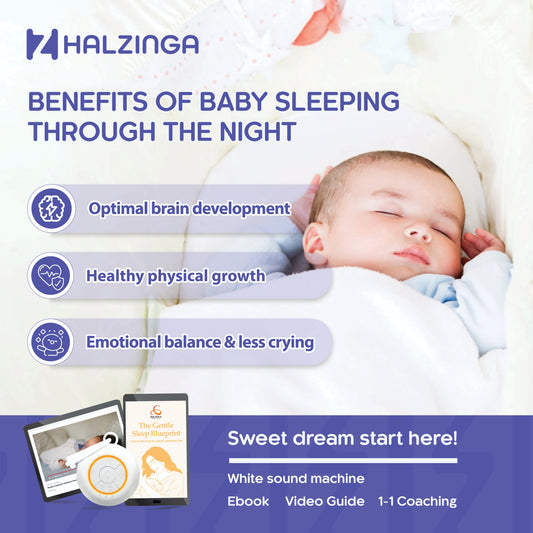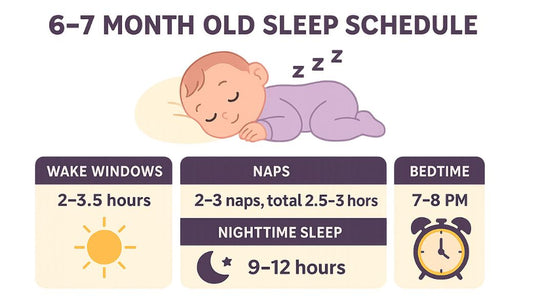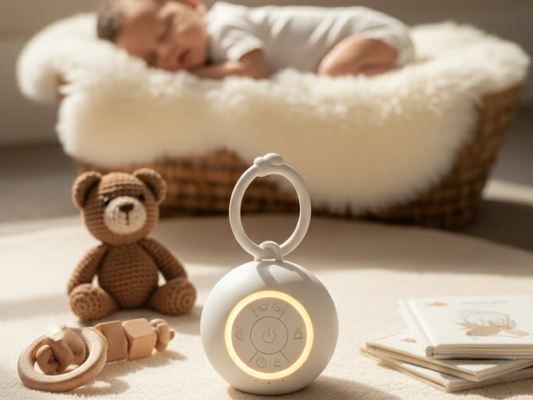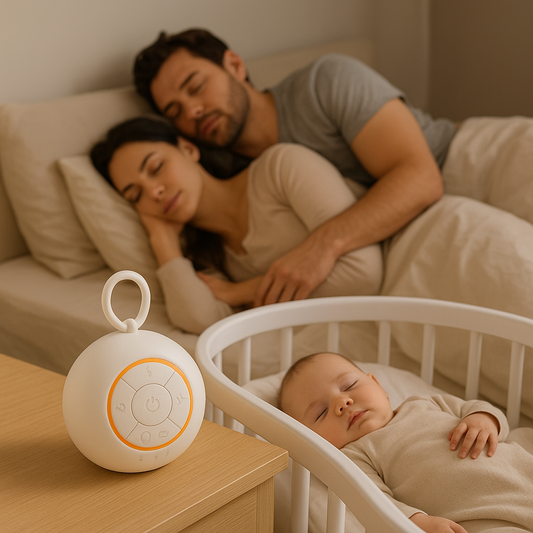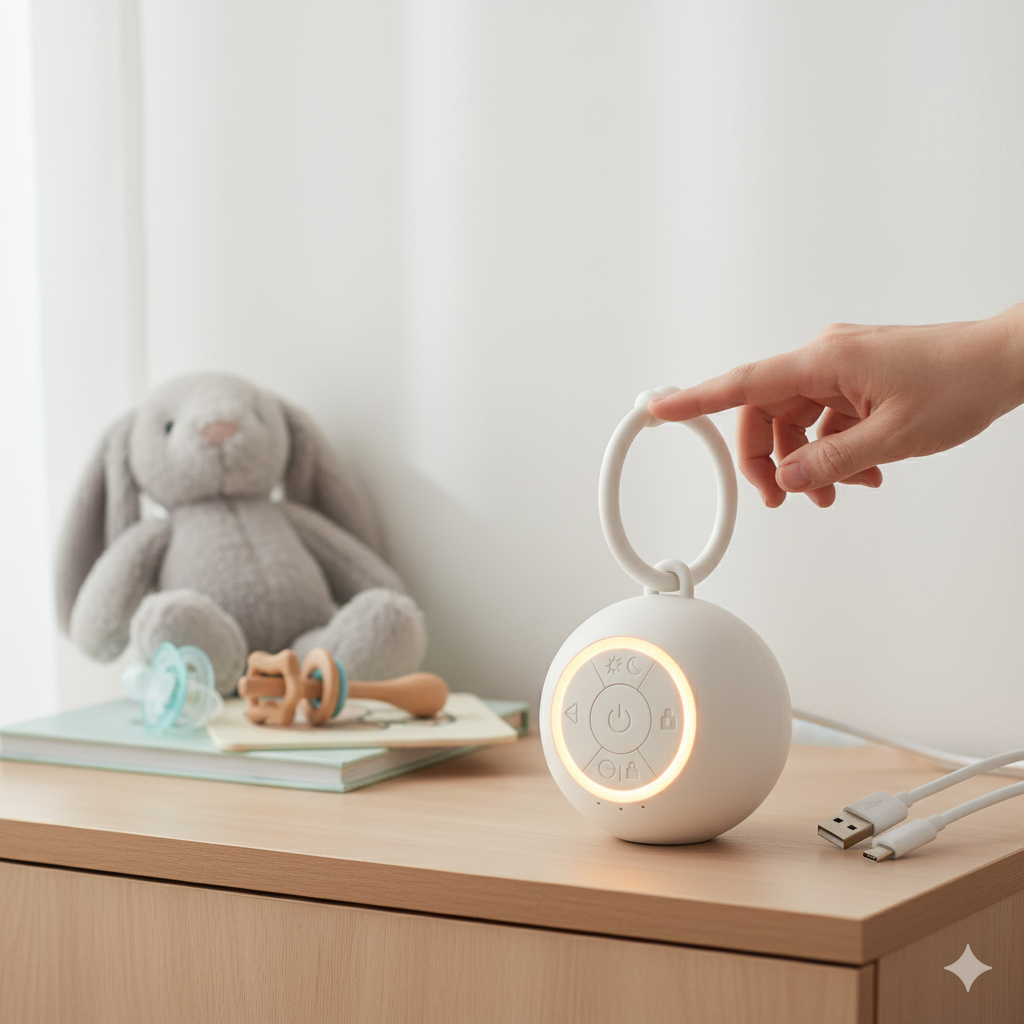
White Noise, Lullabies, or Silence? What Really Helps Babies Sleep Best
Every parent faces the question: what is the best environment to help a baby fall asleep and stay asleep? Some swear by lullabies, others rely on white noise, while a few prefer complete silence. Since babies are sensitive sleepers and their rest directly affects their growth and mood, choosing the right approach matters. Understanding how different sounds impact baby sleep can help you create the most soothing environment possible. In this guide, we’ll explore the pros and cons of white noise, lullabies, and silence, and how to know which one works best for your little one.
Why Sound Matters for Baby Sleep
Babies spend nine months in the womb surrounded by constant sound—the mother’s heartbeat, blood flow, and muffled external noises. This means that unlike adults, who may prefer silence, babies are born accustomed to steady background noise. The transition from a noisy womb to a quiet bedroom can sometimes be unsettling, which is why certain sounds like white noise or lullabies can be comforting. Sleep research shows that consistent, calming sounds can reduce wake-ups during light sleep phases and help babies connect sleep cycles more smoothly.
White Noise: A Steady Soothing Option
White noise is one of the most popular tools parents use to help babies sleep. It consists of consistent background sounds that mask other noises, such as traffic, barking dogs, or voices in the house. By creating a constant auditory backdrop, white noise reduces the chance of sudden disruptions that might wake your baby.
A white noise machine is often the easiest way to provide this effect. These devices are designed to play continuous sounds like rainfall, ocean waves, or simple static-like hums at safe volumes. Unlike apps on a phone, which may shut off or expose babies to distracting light, a dedicated machine offers reliable and baby-safe sound.
Benefits of white noise include:
-
Mimics the sound environment of the womb
-
Helps babies fall asleep faster and stay asleep longer
-
Masks unpredictable household or outdoor noises
-
Provides a consistent cue that it’s time for sleep
Parents should ensure the volume remains moderate, about the level of a shower running in the next room, and place the machine away from the crib for safety.
Lullabies: The Comfort of Music and Voice
Lullabies have been used for generations across cultures to help babies relax before sleep. The gentle rhythm, repetitive melody, and soothing tone provide comfort and a sense of security. Whether sung by a parent or played softly through a speaker, lullabies can reduce stress hormones in babies and create a strong emotional bond between parent and child.
Unlike white noise, lullabies often serve as part of a bedtime routine rather than lasting through the entire night. Singing or playing one or two songs can signal to your baby that sleep is approaching, much like dimming the lights or reading a bedtime story. The key is to keep the volume low and the rhythm slow, ensuring that the music relaxes rather than stimulates.
Benefits of lullabies include:
-
Strengthening parent-baby bonding
-
Helping babies associate specific songs with sleep
-
Promoting emotional comfort and calmness
Silence: Natural but Not Always Effective
Many adults associate silence with restful sleep, but babies often react differently. Since they are used to constant sound in the womb, complete silence can sometimes make them restless or startle them awake at sudden noises. For some babies, however, silence can work well, especially in quieter households or during naps when environmental noise is minimal.
The biggest challenge with silence is unpredictability. A door slamming, a dog barking, or a phone ringing can easily disrupt sleep in a silent room. For parents who prefer silence but live in noisy environments, a compromise like soft white noise can be the most effective solution.
Benefits of silence include:
-
Encourages adaptability to a quiet environment
-
Can work well in naturally quiet homes
-
Does not rely on external devices or sound cues
Which Option is Best?
The truth is that there is no single answer. Every baby is different, and what works for one child may not work for another. Some parents find that their babies sleep best with a combination—for example, using lullabies during the bedtime routine to signal winding down, then switching to white noise throughout the night to maintain sleep.
Factors to consider when choosing include:
-
Your home environment: If your home is noisy, white noise may be essential.
-
Your baby’s temperament: Some babies are more sensitive to sound and may prefer silence or soft music.
-
Your routines: Lullabies can play an important role in creating a calming bedtime ritual even if you use white noise later.
Experimenting gently with different options and observing your baby’s response is the best way to discover what works.
Tips for Creating the Ideal Sleep Sound Environment
-
Keep volume at safe levels, never too close to your baby’s ears
-
Use sounds consistently to reinforce sleep cues
-
Avoid overstimulating music or abrupt sound changes
-
Combine soothing sounds with other calming sleep cues like dim lighting, swaddling, or a bedtime story
-
If using a white noise machine, choose one designed specifically for babies and keep it across the room rather than in the crib
Final Thoughts
Sound plays an important role in baby sleep, whether it’s the steady hum of white noise, the gentle rhythm of lullabies, or the stillness of silence. While each option has its benefits, the best choice often depends on your baby’s unique preferences and your home environment. A white noise machine can provide consistency and protection from disruptive noises, lullabies can offer comfort and bonding, and silence may work in calm, quiet spaces. By experimenting with these options and paying attention to your baby’s cues, you can discover the sleep environment that brings the most peaceful nights for both your child and your family.
